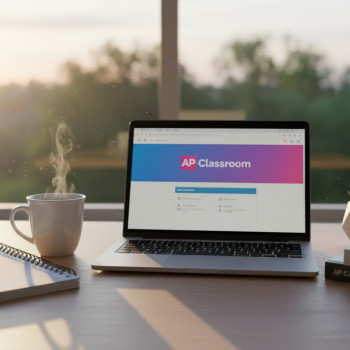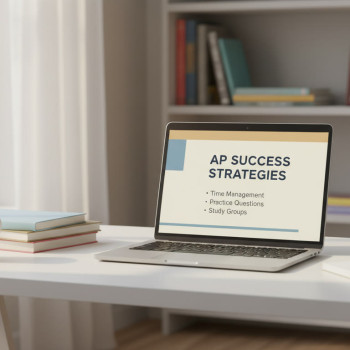Why Build a Post-AP Writing Portfolio?
Finishing an AP course or exam is more than a line on your transcript — it’s a runway for stronger college applications, sharper academic thinking, and meaningful personal growth. A thoughtfully curated writing portfolio showcases not just what you learned, but how you think, revise, and connect ideas across subjects. Admissions officers, scholarship committees, and internship supervisors want evidence that you can research carefully, write clearly, and reflect honestly. A portfolio does that in a living, breathing format.
This guide walks you through practical steps to assemble a standout portfolio, suggests research ideas inspired by AP courses (AP Research, AP Seminar, AP Literature, AP History, AP Biology, and more), provides formatting templates, and shares polishing tips. I’ll also show how one-on-one, personalized support — like Sparkl’s tutoring and tailored study plans — can speed up progress and add polish when you need it most.
What a Strong Portfolio Shows
- Depth: A few pieces that dig deep into a topic are more persuasive than many shallow ones.
- Range: Showcase different modes — persuasive essays, reflective pieces, research reports, creative work, and annotated sources.
- Revision Process: Include drafts, instructor comments, and a final reflection to show growth.
- Research Skill: Demonstrate ability to pose a question, design an approach, gather evidence, and analyze results.
- Voice: Let your own clear, authentic voice come through — not a generic template.
How to Choose Pieces for Your Portfolio
Start by collecting everything: scored AP essays, lab reports, seminar papers, creative work, and any independent projects. Then apply this quick triage:
- Must-Haves (2–3 pieces): Highest-scoring AP essays or research projects with clear feedback.
- Show Variety (2–3 pieces): One creative piece (if relevant), one research-oriented piece, one reflective/personal essay.
- Work in Progress (1–2 slots): Pieces that show risk-taking or unique inquiry, even if imperfect.
Always include revision history for at least two pieces: the first draft, instructor comments, and the polished final draft. Admissions teams love to see the arc of improvement.
Structure: The Portfolio Template
Use a clear, consistent structure for each entry so readers can scan and compare easily. Below is a simple, reproducible template you can adapt.
| Section | What to Include | Why It Matters |
|---|---|---|
| Title and Course Context | Piece title, course name (e.g., AP Research), term, instructor | Signals academic rigor and context |
| Abstract / Short Summary (50–100 words) | One-sentence research question or thesis; key findings | Quick orientation for busy reviewers |
| Final Work | PDF or neatly formatted text | Core of the portfolio |
| Revision History | Initial draft, comments, subsequent drafts | Shows learning process |
| Annotated Bibliography | 3–8 sources with short annotations | Demonstrates research literacy |
| Reflection | 150–300 words on what you learned, challenges, next steps | Provides meta-cognition and maturity |
Where to Host Your Portfolio
Choose a platform that balances accessibility and professionalism. A single PDF is simple and widely accepted; a personal website gives you flexibility and an elegant presentation. If you build a website, keep navigation minimal: “Home,” “Portfolio,” “Resume,” and “Contact.” Use consistent fonts and readable formatting. If you prefer a PDF, make it scannable — clear headings, numbered pages, and a short table of contents.
Research Project Ideas by AP Subject
Below are focused research prompts that grow out of common AP classes. Each prompt includes a suggested method and what a final product might look like. These are designed to be achievable in one semester with modest resources.
AP Research / AP Seminar
- Question: How does local news coverage frame climate change compared to national outlets? Method: Content analysis of local vs. national articles; code for tone and source type. Final product: Comparative paper + digital appendix with coded dataset.
- Question: Do persuasive techniques differ between school newspapers and social media? Method: Rhetorical analysis, short surveys. Final product: Rhetorical report with examples and recommendations for effective student communication.
AP Literature
- Question: How are memory and trauma represented in contemporary YA novels? Method: Thematic close readings; compare 3–4 texts. Final product: An argumentative essay with textual evidence and a reflective author interview (if possible).
- Question: How do translators handle cultural idioms in a specific poet’s work? Method: Compare translations, note choices, consult translator notes. Final product: A comparative analysis with translation excerpts.
AP History (US/World/European)
- Question: How did local primary sources reflect political change during a chosen decade? Method: Archive research or digitized newspapers. Final product: A document-based paper with transcriptions and contextual analysis.
- Question: What was the economic impact of a regional infrastructure project? Method: Use census or economic records, maps, and secondary scholarship. Final product: A mixed-methods report combining quantitative tables and narrative analysis.
AP Biology / AP Environmental Science
- Question: Does school green-space biodiversity vary with maintenance practices? Method: Quadrat sampling, species counts. Final product: Lab-style report with charts and recommendations for the school grounds crew.
- Question: What is the microplastic load in local stormwater runoff? Method: Simple filtration and microscopy, paired sampling. Final product: Research poster and short policy brief for local stakeholders.
AP Computer Science
- Question: How accessible is an online school resource to students with disabilities? Method: Heuristic analysis, simple user testing. Final product: Usability report with prioritized fixes and code samples.
- Question: Can a small ML model predict student quiz performance using in-class engagement metrics? Method: Build a dataset, train a simple classifier, analyze features. Final product: Technical write-up and code appendix.
Scaffolding Your Project: Timeline and Milestones
Break your semester project into weekly milestones. The table below gives an 12-week example timeline suitable for a research paper or extended portfolio piece.
| Week | Goal | Deliverable |
|---|---|---|
| Weeks 1–2 | Topic selection and question refinement | Proposal (1 page) with research question |
| Weeks 3–4 | Literature review and methods plan | Annotated bibliography (5–8 sources) |
| Weeks 5–7 | Data collection / close reading / experiments | Raw data files and observation notes |
| Weeks 8–9 | Analysis and drafting results | First full draft |
| Week 10 | Feedback and revision | Revised draft with comments addressed |
| Weeks 11–12 | Final edits, formatting, reflection | Final paper, reflection, and portfolio entry |
Writing and Revision Strategies That Work
Good writing isn’t discovered — it’s built. These strategies will help you write with clarity and keep readers engaged.
- Start with a roadmap paragraph that tells the reader what you’ll do and why it matters.
- Use topic sentences that mirror your roadmap to keep paragraphs cohesive.
- Show, don’t tell: use specific evidence — quotes, data points, or concrete examples.
- Read your work aloud; stumbling often reveals clarity problems.
- Ask for targeted feedback — one coach for structure, another for prose, one peer for readability.
The Power of Revision
Show two things in your revision history: the original problem you fixed and how you fixed it. For instance, if your early draft rambled, annotate how you tightened paragraphs into clearer claims and what evidence you added. This process-oriented documentation signals maturity and intellectual honesty.

Polish: Formatting, Citations, and Reflections
Formatting and proper citation aren’t just formality; they show professional habits. Use a consistent citation style (MLA, APA, Chicago) recommended by your instructor. Include an annotated bibliography of your key sources. End each portfolio entry with a 150–300 word reflection that answers: What did I learn? What surprised me? What would I do differently next time?
Sample Reflection Prompts
- What was the original question and why did it matter to you?
- Which method or source changed your mind the most?
- How did feedback reshape your argument?
- What are the ethical or real-world implications of your findings?
Assessment: What Reviewers Look For
When admissions officers or scholarship panels scan portfolios, they typically ask three questions:
- Can this student think critically and independently?
- Do they show academic curiosity and persistence?
- Can they communicate complex ideas clearly?
If your portfolio answers these — even with a single excellent piece and a strong reflection — you’re ahead of many applicants.
How Personalized Tutoring Can Help — Without Taking Over
Working with a tutor doesn’t mean outsourcing your thinking. The best tutors coach you through hurdles, suggest researchable questions, and help structure revision cycles. For many students, Sparkl’s personalized tutoring and tailored study plans provide that targeted mentorship: a tutor can help you refine a research question, set realistic weekly milestones, practice academic prose, and apply AI-driven insights to find gaps in your argument. Use tutoring to accelerate learning, not replace your voice. Keep final decisions and content in your own words.
Examples That Inspire (Mini Case Studies)
Here are three brief, real-world style examples (anonymized and generalized) to spark your imagination.
- Case Study A — AP Research Student: Turned a passion for local food systems into a mixed-methods study comparing school cafeteria sourcing policies. Results included a policy brief presented to the district and a polished paper for the portfolio.
- Case Study B — AP Literature Student: A comparative essay on identity in two novels grew into a multimedia project: essay + annotated reading list + recorded interview with a teacher about pedagogical choices.
- Case Study C — AP Biology Student: Simple field surveys of pollinator visits on campus became a lab-style report with charts, suggested habitat improvements, and an outreach flyer for the school garden club.

Common Pitfalls and How to Avoid Them
- Too Many Pieces: Don’t confuse quantity with quality. 5–8 well-chosen entries are better than 12 weak ones.
- Overuse of Jargon: Make complex ideas readable — define terms for non-specialist reviewers.
- Lack of Context: Always situate your work — why does this question matter beyond the classroom?
- Missing Reflection: Never submit a piece without a short reflection about your process and learning.
Final Checklist Before Submission
- Each piece has a title, course context, abstract, final product, revision history, bibliography, and reflection.
- Formatting is consistent and accessible; fonts are readable in both web and PDF formats.
- Files are labeled clearly (e.g., 2025_APResearch_Smith_Final.pdf).
- Proofread by at least two people (one peer, one adult or tutor) and run readability checks.
- Backup everything (cloud and local) and confirm file permissions if sharing with reviewers.
Parting Advice: Make the Portfolio Yours
Your portfolio is a narrative of intellectual curiosity. Let it show the questions that kept you up at night, the dead-ends that taught you something, and the small breakthroughs that surprised you. Authenticity is the through-line: a genuine curiosity, clearly communicated, will always outshine forced ambition.
If you want an extra boost, consider targeted, one-on-one guidance to refine a question or tighten your prose. Sparkl’s tutors specialize in helping students shape research questions, build realistic timelines, and strengthen arguments while keeping the student’s voice front and center. A few focused sessions can transform a promising draft into a portfolio piece that truly represents your best thinking.
Ready to Start?
Pick one piece today: an AP essay, a lab report, or a seminar presentation. Give yourself two weeks to draft a concise abstract and reflection. Use the templates above, set two deadlines with a peer or mentor, and iterate. Portfolios aren’t built overnight — they’re built intentionally, one revision at a time. When you look back, you’ll see not just polished work, but the map of your learning.
Good luck — and remember: the best portfolios reveal a curious mind, a steady hand at revision, and a voice that’s unmistakably your own.
























No Comments
Leave a comment Cancel